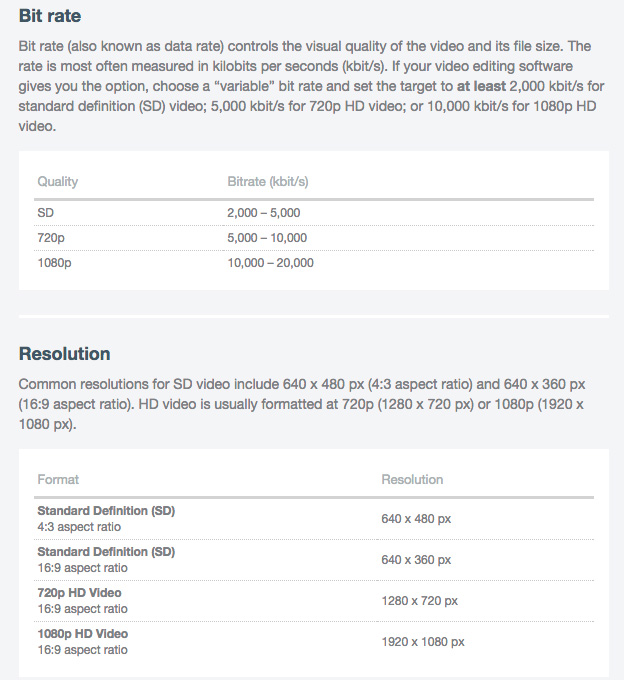 Last week, I received this email from Dr. Nicolas Magriel, in London, expressing concerns about a recent policy change at Vimeo. Since many of my readers are outside the US, I wanted to share this with you in hopes that Vimeo reconsiders their policy.
Last week, I received this email from Dr. Nicolas Magriel, in London, expressing concerns about a recent policy change at Vimeo. Since many of my readers are outside the US, I wanted to share this with you in hopes that Vimeo reconsiders their policy.
Larry
– – –
[ Dr. Magriel writes: ]
I am writing in the hopes that you might be able to influence Vimeo regarding the following ridiculous policy of theirs:
I am a musician, film-maker and a sort of academic working on Indian music. I’ve been using Vimeo to host several hundred archival videos of sarangi players in India in the 1990s. (Sarangi is the instrument I play). I upload my quota of 5 GB most weeks. Though I am American, I live in the UK, so all this archival video is standard definition PAL (720 x 576). Would you agree with me that this is standard definition footage, not high definition footage?
A few of months ago Vimeo took the remarkable decision that this should be classified as High Definition video along with everything else larger than the NTSC standard 640×480. Sounds a little US-centric, considering a large portion of the planet has used the PAL standard. And presumably Vimeo have many customers outside the US.
The consequence of this is that every time I upload a video using the compression settings which Vimeo has recommended for years, I get a message “Just a warning”…telling me that 2000 is too low a bit rate for HD video, so my video won’t play as well as it could. And every video I upload now has an HD button which cannot be removed and does nothing—so confusing the viewer.
I wrote to them many times on their help forums, and was basically stonewalled; my SD videos are now classified as HD and that’s the end of it. Seems a bit arbitrary, but I guess everyone working in the Vimeo office was born in the High Definition era, and they simply don’t care. And this gives me some concern that they might just dump the facility to upload or stream SD videos one day, and then the hundreds of hours I have spent creating this archive will have been wasted. Scary!

BTW my site in question is www.sarangi.net. I am enclosing a screenshot of Vimeo’s revised blurb on compression settings. Any idea what can be done?
Many thanks. I’m guessing that this issue might be of interest and consequence to others among your readers, but maybe not…
– – –
Larry replies: Dr. Magriel is correct, the pixel dimensions for PAL are 720 x 576, just as NTSC uses 720 x 480 AND 720 x 486. Note that all three of these are larger than 640 x 480.
This is because SD video uses rectangular pixels for its images which are converted to square pixels for the web to create frame sizes of 640 x 480 (4:3) or 640 x 360 (16:9). (While PAL and NTSC use different shaped rectangles, they both convert to the same square pixel dimensions.) Note, however, that this conversion happens along the vertical dimension (480/360).
However, it would be equally correct to convert along the horizontal dimension, creating image sizes of 720 x 540 (4:3) or 720 x 405 (16:9).
Vimeo would be better advised to define High-Def video as a frame size with a horizontal dimension greater than 1,000 pixels. That would allow both NTSC and PAL image sizes to remain standard def.
Let me know what you think.
2,000 Video Training Titles
Edit smarter with Larry Jordan. Available in our store.
Access over 2,000 on-demand video editing courses. Become a member of our Video Training Library today!
Subscribe to Larry's FREE weekly newsletter and
save 10%
on your first purchase.
11 Responses to Vimeo Needs to Rethink Frame Sizes
I share Dr. Magriel’s disbelief that such a policy could be implemented without an understanding of its actual effect. For me it’s timely, in that I was about to sign up for Vimeo.
Would any of your readers have any recommendations for Web Host organisations who have a reputation for effective video streaming as part of their web hosting package?
Elliott Bristow
Yes I am very happy to see this article. I have also been perplexed and annoyed by this new policy of Vimeo’s.
For a video hosting platform, that’s astounding.
To reference another article here, it’s an end result of not respecting your audience.
If you build on a fault line, don’t be surprised when the earth moves under you.
Going to recheck my Vimeo Pro account…
I completely agree with Nicolas. One thing, though, that puzzles me is the stubbornness to address this freakishly simple issue with the addition of just a couple of lines of code inside the primitive ‘if-then-else’ snippet where this is being addressed on the vimeo server. I am guessing that the root of the problem is the fundamentally ill structured (as with most companies, not just vimeo) customer support system. I can’t see how such a simple and sound request could have been disregarded if it went past any unhappy, low paid, technically illiterate, and wholly indifferent support officer and their immediate line manager.
the real PAL resolution is 768 x 576 lines / pixel.
what I remember is that Sony introduced the PAL 720 x 576 pixel resolution, spreading the side dimension of the pixel in the DV digital format and loosing some video information computer tenth analog video.
when I convert a video tape PAL format, I try to capture it 768 x 576 square pixel.
and using video mostly on computer screens, I will continue to do that: 768 x 576 square pixel, any other solution seems to me a mistake.
I did not notice the vimeo noisy HD option on SD video, but I find it noisy, that’s all.
mario
Mario:
Thanks for the update.
Larry
I don’t know what Mario is referring to as “noisy”. I have no problem with noisiness:the symptoms that I am concerned about are 1) the threatening messages “Just a warning!”that 2000 is too low a bit rate for HD video (which 768×576 is not), and 2) the useless HD button being put on my videos. My videos are all encoded at 768×576.
Nicholas:
I suspect “noisy” is an auto-correcting spell-checker running amok.
Larry
“Vimeo would be better advised to define High-Def video as a frame size with a horizontal dimension greater than 1,000 pixels. That would allow both NTSC and PAL image sizes to remain standard def.”
100% agree.
Hi Larry,
This is an update on this problem: I hadn’t been working with video for a couple of years. Just now I started work on expanding my online archive. Now when I upload my 768×576 videos to Vimeo, I no longer get the threatening message, but they are converted to 640X480. If I understand your first reply above correctly, this is unfortunate. As standard definition is already deplorably low res, why reduce it further—it could as you say just as easily be 720X540. Is it worth it trying to talk Vimeo into this?
However the plot thickens : I see now that the videos I was uploading two years ago were indedd 720X576 after capyure. Then after converting them for vimeo, they became 720 X575…and they remained at this size if I downloaded them from Vimeo—there was no 640X480.Anyway the total effect is that now my videos are coming out smaller frame sizes than two years ago. What to do?
All the best,
Nicolas
Dr. Magriel:
I have no clue. I suggest contacting Vimeo. (On the other hand, I would not worry about the 1 pixel difference that you point out in the files. That falls within a rounding error.)
Larry